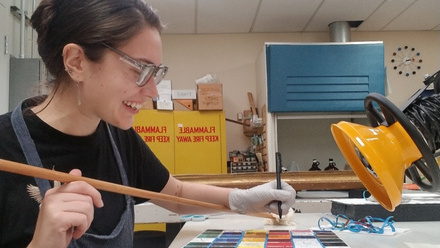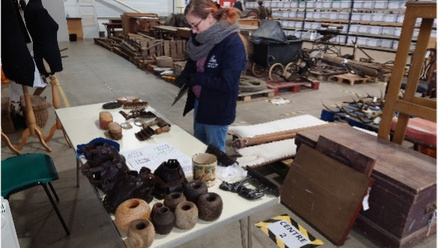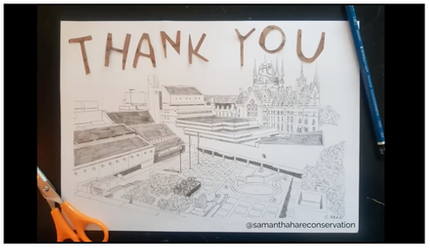My time as a Photographic Materials Icon intern at the Imperial War Museum
In July 2021, I started a 12-month Icon internship in Photographic Materials Preservation and Conservation at the Imperial War Museum (IWM). The internship was generously funded by the Claire Hampson fund.
During my time at IWM, I was based in Duxford, Cambridgeshire where the majority of IWM’s collections are stored. IWM holds approximately 11 million photographs across negative, print and digital formats.
I was delighted to gain valuable experience in a museum with such a vast archive. I am fascinated by photographic media and photographic processes so when an opportunity to work with these objects arose, I jumped at the chance.
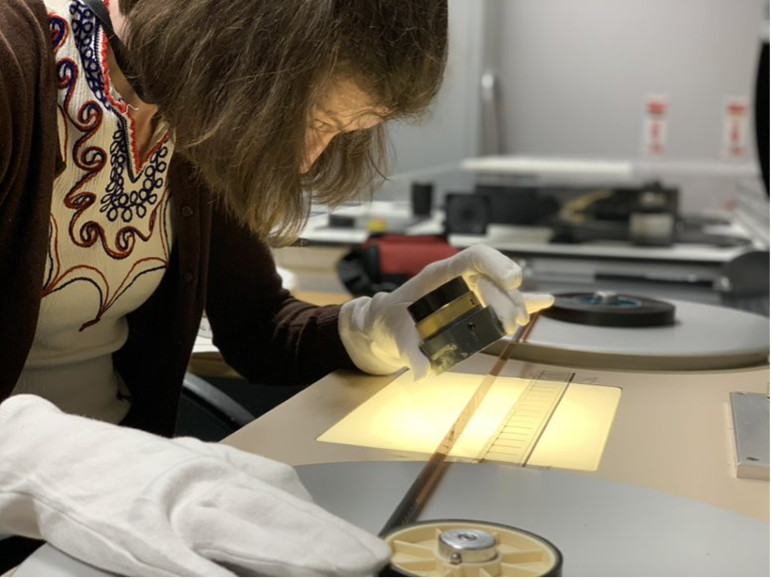
The internship introduced me to the preservation issues associated with looking after such a large archive as well as allowing me to gain practical hands-on conservation experience. I covered a vast array of topics during my internship, building on knowledge learned during my conservation education and learning new skills and methods of working.
It was a challenge, and I was very lucky to have the support of my IWM colleagues and supervisors. For the first 9 months I was supervised by preservation manager Elena Nepoti, and for the last 3 months by preservation officer Victoria Green. In addition, Lorna Calcutt, my Icon supervisor, gave myself, Elena and Victoria support regarding all matters relating to Icon and the internship. I would like to take this opportunity to thank my supervisors for their support, time and guidance.
Training
The internship involved several in-house training sessions. In my first month I received training on the preservation, conservation and handling of photographic and moving image film. This taught me how to identify film (for example whether a film is fine grain, master etc..), identify whether there is a soundtrack and look for edge and notch codes.
I also learnt how to handle and observe film, how to remove sticky residue and how to rewind a film reel evenly so that it can be stored appropriately for preservation purposes. I also gained valuable knowledge during sessions in salvage and emergency response training, Hazard training, IPM and the use of a microfadeometer.
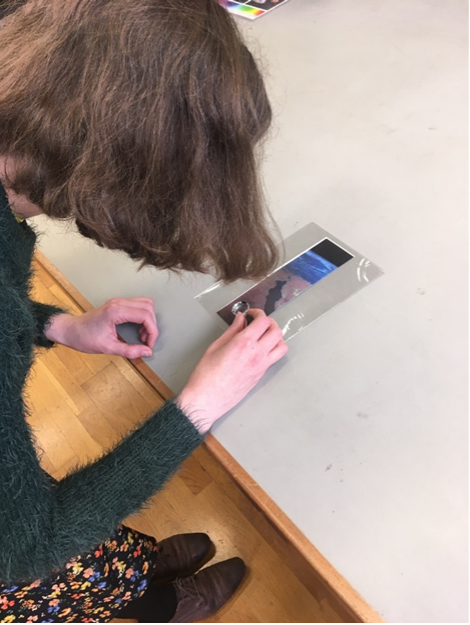
One highlight of the internship was attending ‘History, technology, identification and care of digital prints with Ryan Boatright’ organised by the Icon Photographic Materials Group. This course introduced me to a wide range of contemporary digital printing techniques, taught me the basics of identifying digital prints and briefly touched on their care and conservation. During the course I was informed of the technological changes in the production of digital prints from the 80s to the present day. I had previously been unaware of the vast number of processes used to create these prints. I particularly enjoyed examining ink dot patterns under magnification which is used to identify printing techniques.
I also took part in a photographic seminar titled ‘Unicum – photography in the age of non-mechanical reproduction’ held by the Alinari foundation. This seminar focused on the conservation of direct positive photographic objects in preparation for digitisation. It was interesting to gain insight on treatments and the decision-making process involved in the conservation of these unique objects.
Condition Surveys
One of my first tasks was to complete condition survey’s in IWM’s paper and photographic media stores. Before conducting the survey’s, I thought through and researched various survey methods and discussed this with my supervisor. This allowed me to independently consider what may be needed in a collection survey.
One of the survey’s involved examining the contents of a specific storeroom which contained 21400 glass plate negatives and lantern slides. I also completed an additional survey of approximately 1650 photographic panoramas held by IWM. During these surveys I documented the condition of the objects, gave a short physical description and detailed present storage conditions. Overall, the objects were in Good-Fair condition, however some were in Poor condition and required remedial treatment. This helped to prioritise the objects and identify which were most at risk.
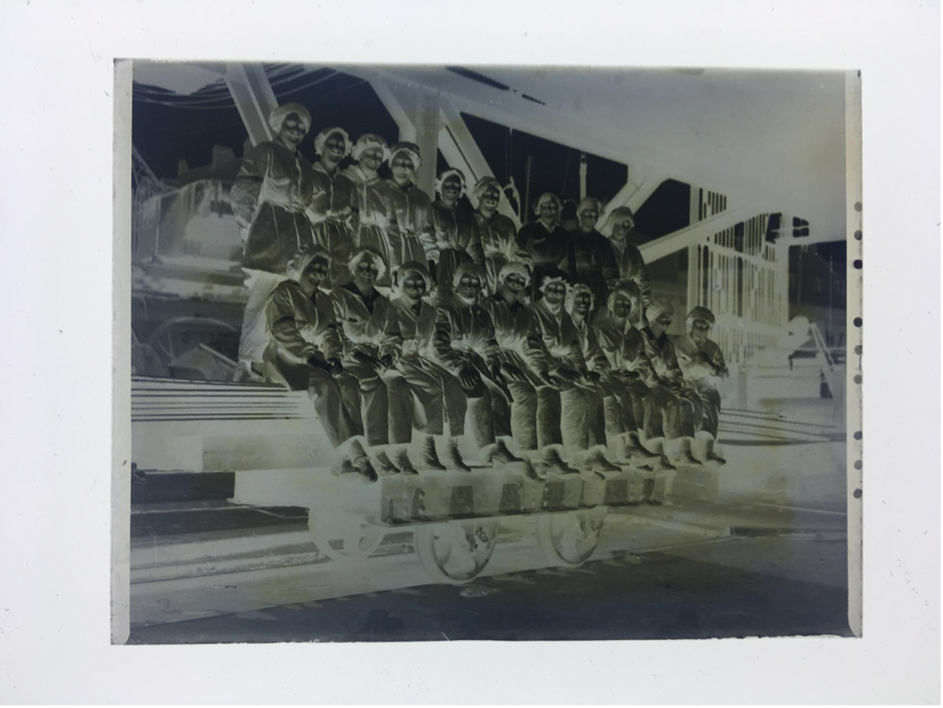
At the end of the survey, I compiled a report, proposal, and a volunteering project plan with the help of my supervisor. As part of this report, I researched various treatment options which could be used to conserve and rehouse glass plate negatives and oversized prints. This involved consulting recent journal articles, my previous placement supervisor and considering what may have caused degradation patterns seen on the objects. When completing the report, I considered what would happen if the objects were left in situ. I weighed up the costs and benefits of completing remedial conservation work and rehousing the collections.
Remedial Conservation
After being given the go ahead by management to complete preservation/conservation of the identified at risk objects, I completed a costs spreadsheet that could be used for the purchasing of materials. This involved researching suppliers, working out the exact size of boxes that were needed and which materials could be bought within our budget constraints. As it was not possible to rehouse the entire collection it was necessary to create a spreadsheet detailing which objects should be prioritised. The glass plate negatives were of varying sizes, so it was not a ‘one size fits all’ exercise. Due to resource and time restrictions we decided to concentrate on the panorama project.
Once the materials were purchased remedial conservation work was started. This involved assessing each print to ascertain if it was suitable for treatment, testing media, humidification of the rolled panoramas in a humidification chamber, spray relaxing the panoramas once unrolled and pressing for at least a week.
Whilst the objects were pressing, folders were created for the panoramas using box board and Melinex. Once the objects were pressed sufficiently, they were attached to the board using thin Melinex strips. Sleeves and backing materials were created to facilitate access to the collection by members of the public. Due to their size a bespoke box was designed to contain the panoramic prints.
I also had the opportunity to mount and frame works of art on paper. This was useful as I missed out on framing and mounting workshops during my MA due to the COVID pandemic.
Supervising Volunteers
One major task involved administering and supervising a volunteer project. The aim of this project was to rehouse a section of the Tim Hetherington archive. A photographer known for exploring conflict who died in 2011 when photographing unrest in Libya.
The archive was stored in folders which would have contributed to the degradation of the materials over time. This involved removing 35mm and Medium Format Cellulose Acetate (film) negatives and paper photographic contact sheets from their current housing and moving them to more appropriate acid free archival sleeves, folders and boxes. We dealt with a large quantity of film and contact sheets which was down to the volunteers who made quick work of rehousing the collection.
It was great to see the volunteers learn and then gain confidence handling film. With their help approximately 32000 negatives and 1600 contact sheets were rehoused. Overseeing this work helped me to understand the work and organisation involved in a large project. This will be valuable in the future when writing reports and proposals.
It was satisfying to see this project finished, stored, and packaged in the best possible conditions which will allow access for future generation.
Condition checking
During the year I was given the opportunity to condition check a variety of photographic materials. When condition checking, I observed various types of degradation patterns, inappropriate packaging materials and various types of material and photographic processes. It was useful to consider objects other than positives and negatives that are associated with photographic materials such as photographic albums and frames. For each new material and process encountered, I spent time researching and learning about the identification, conservation, and appropriate display, packing and storage conditions of these objects. I continued to write treatment reports and condition proposals whilst completing this work.
One highlight was a collection by early 20th century photographer Francis James Mortimer. Mortimer was known for his innovative photographic techniques, such as using multiple composite negatives and using pigments and oils alongside photographic methods. IWM hold preparatory studies by Mortimer which give a fascinating insight into his working process.
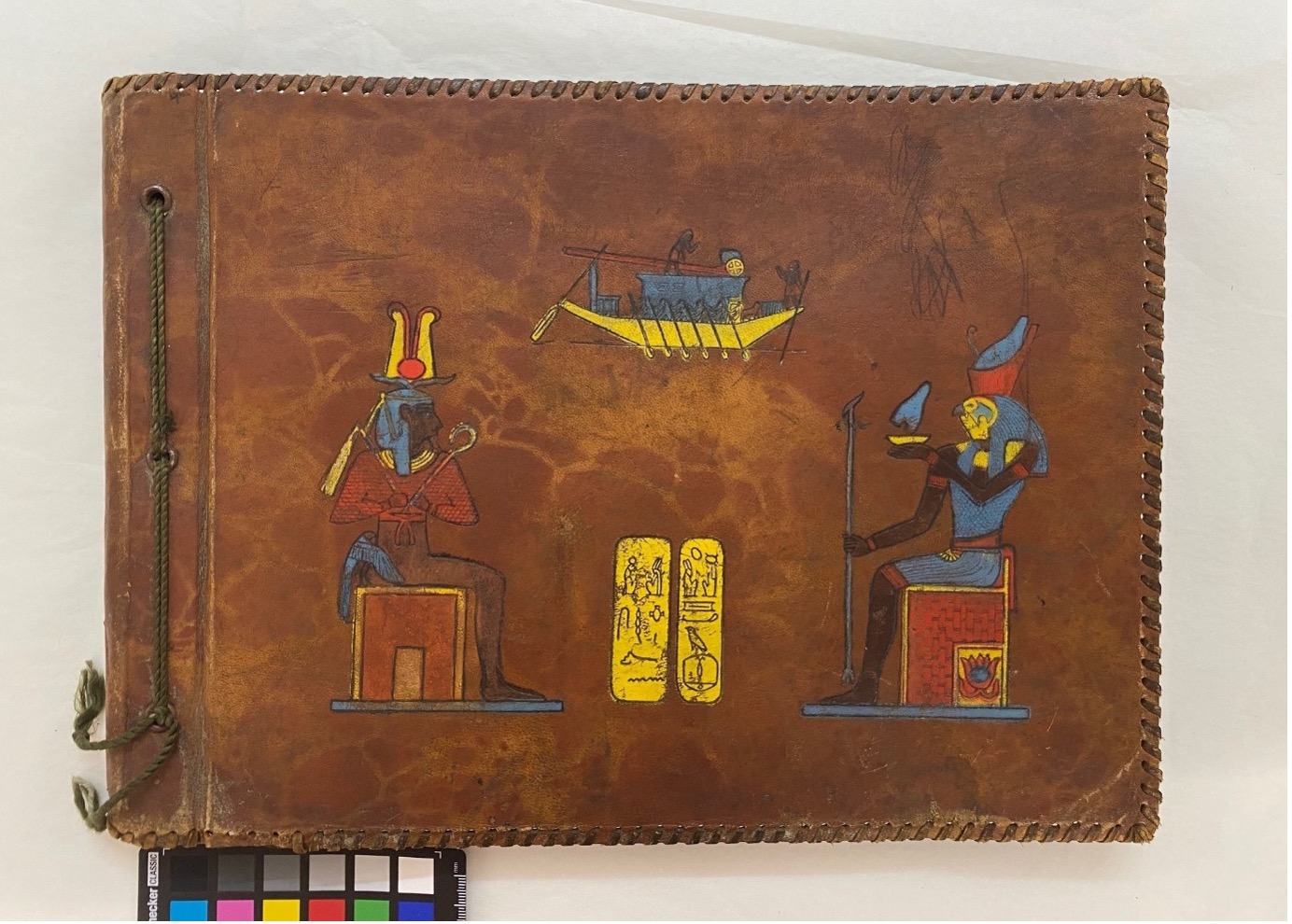
Preservation
As well as large projects I was involved in several ongoing tasks as part of the preservation team. I was introduced to Emergency Response and planning, carried out maintenance tasks on IWM's Environmental Monitoring System, recorded data from pest traps, analysed data as part of IWM's IPM programme and assisted my supervisor in the completion of a light survey. I also assisted the visual resources department, hazard checking negatives which had suspected cellulose nitrate content.
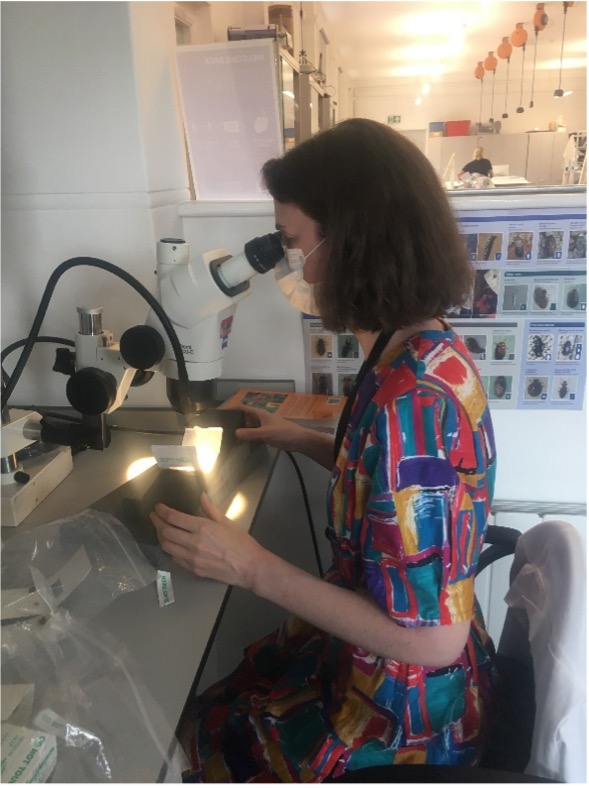
IPM data collection
Conclusion
The internship at the Imperial War Museum has been highly beneficial for my career and has been a fantastic experience. I was given a unique opportunity to work across both preservation and conservation departments. This allowed me to experience how preservation and conservation work both independently and together within a large museum. I have furthered the practical skills and knowledge I gained at university and gained new ones. The encouragement to find time to complete research and continue with reflective practice will be something I will take with me in my career going forward.

